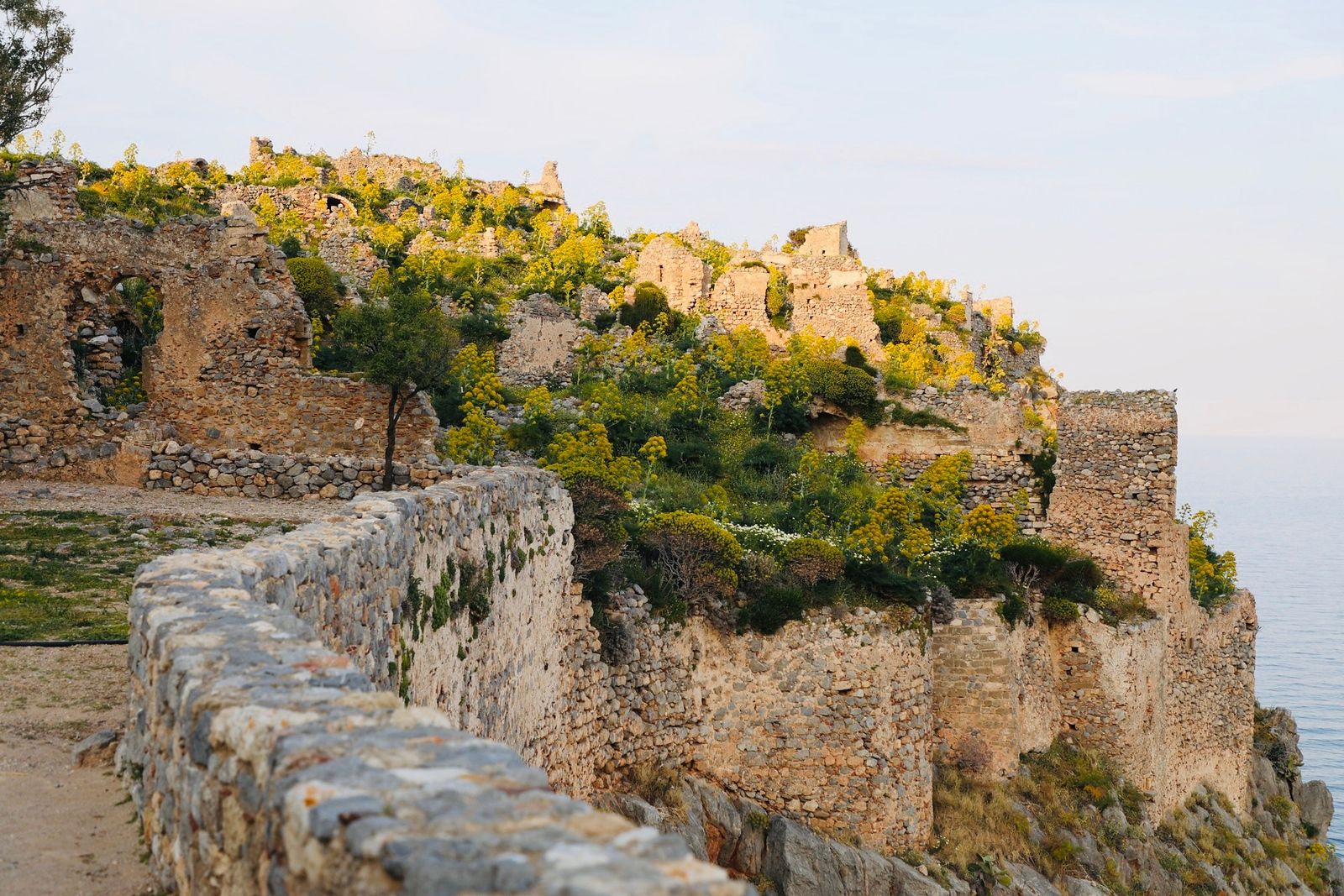
Mitch has been sending photos from his wanderings in Greece this week while I watch his cat.





I don’t mean to always be a supergeek botanical nuisance, but there’s been a tall umbellifer cropping up in the background in those haunting scenes of Peloponnesian ruins, in stupendous bloom — I wonder, could it be the Mediterranean’s own giant fennel? Ferula communis ‘Gigantea’ is not the edible fennel (Foeniculum vulgare), but a spectacular monocarpic showboat grown for its ferny leaves and luminous, statuesque presence in bloom.

The timing of his photos is positively freakish because, coincidentally, before seeing these photos, I had planted two in my garden earlier in the week, grown by Annie’s Annuals but picked up at a local nursery, my second attempt with this fennel. This time I gave them all the sun I could find in my very crowded garden.

So having giant fennel on the brain, I asked for more photos, please, perhaps a closeup to help with ID, and he cheerfully complied. I don’t know what else it could be but giant fennel. It’s that same commanding, aureate vision I had in mind when settling in my two 4-inch plants this week.

Of course my little urban garden can’t compete with a setting of Mycenaean stonework . (Don’t quote me on the age of the stonework, but it has a nice ring to it, doesn’t it?)


There definitely seems to be some synergy going on with the fennel and the stones — drainage, alkalinity maybe.




Mitch was very excited about this superbloom of Grecian poppies, and normally I’d be all over the poppies…


But it’s Greece’s giant fennel that has stolen my heart this spring.
all photos by MB Maher

Looks like Ferula communis to me. I remember first seeing it in James Hitchmough’s garden behind the glass houses at RHS Wisley, but certainly not in this profusion. I tried it in New Jersey, but no go. Good luck in southern California, though it seems a bit late to be starting it. But maybe it’s biennial?
Fabulous photos from the globe-trotting MB Maher! The Ferula is impressive. You must provide a status on how it performs in your garden. Annie’s site says it’s a monocarpic perennial and doesn’t mention it’s proclivity for reseeding but surely, if it’s that widely spread in the Greek landscape, it must seed freely?
Those look like agaves to me. Just saying.
@James, thanks for corroborating. I’ve yet to see it in the flesh!
@Kris, I’ll def keep you updated, and if there’s seeds, I know a windswept hilltop garden where it will probably flourish…
@Rebecca, so true! I hadn’t even thought of that! No wonder I love this plant.
They do look like Agaves, that was the first thing that came to mind. Looks like Greece got a good winter rainy season, too.
All that rock is certainly a picturesque background for the fennel and poppies. Can’t help thinking how challenging it would be to garden in that kind of environment. However, can certainly appreciate the results!
You can buy those from Annie’s? *must go place order* Giant fennel — so amazing. I didn’t know about this plant but now I must try it!
It is Ferula communis and it most certainly is not monocarpic in Cyprus. I have been here for 15 years now and witnessed them at the roadside in abundance, getting bigger and bigger each year in the same locations. I collected and sowed seeds 3 years ago and raised over 30 young plants some of which are flowering for the first time right now at about 2′ (600mm) high. I only recently discovered that it was not a wild form of Foeniculum (real Fennel) which is just as well as we were considering drying the foliage and feeding it to our horses – turns out it can be toxic!
Good to know! Mine are leafing out nicely so we’ll see what this spring/summer brings.
Interestingly while most types of F. communis are poisonous there is one subspecies that is edible and used as a vegetable in Tunisia etc. The edible and poisonous species look exactly alike.